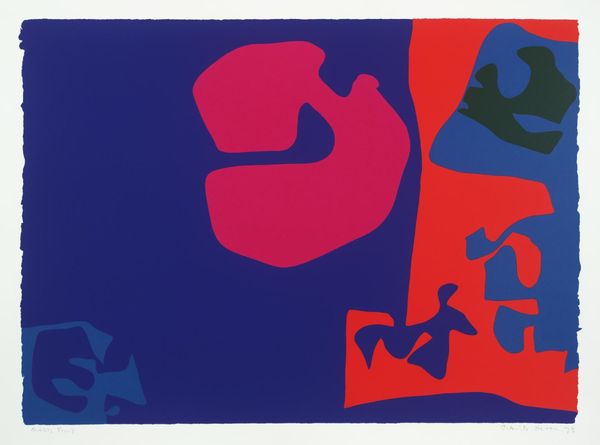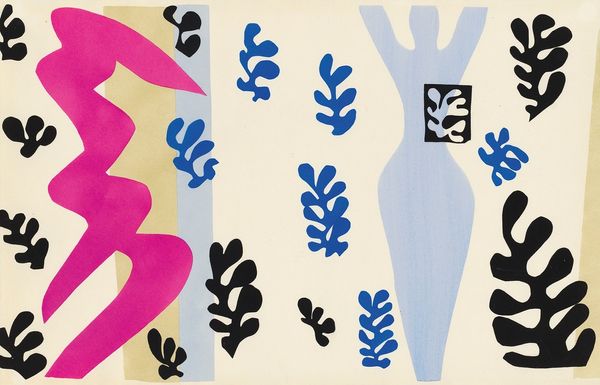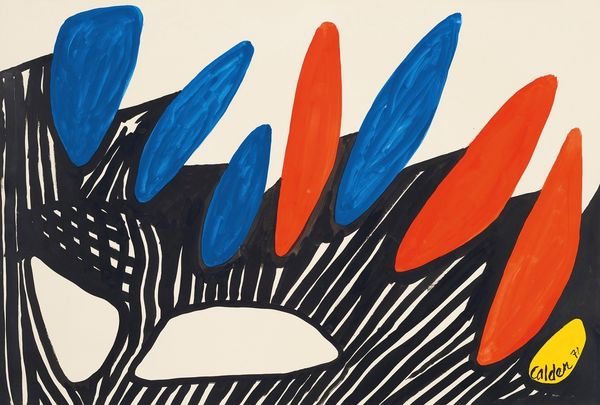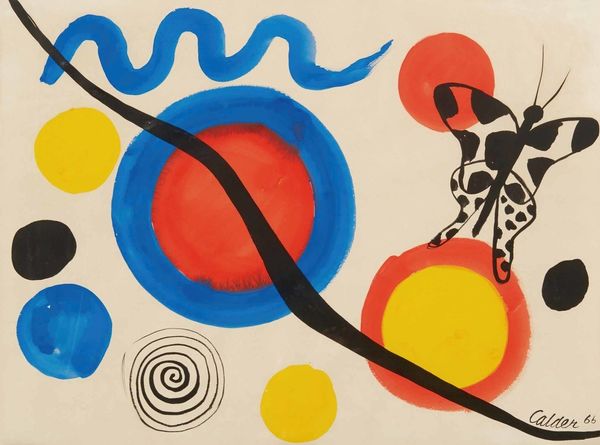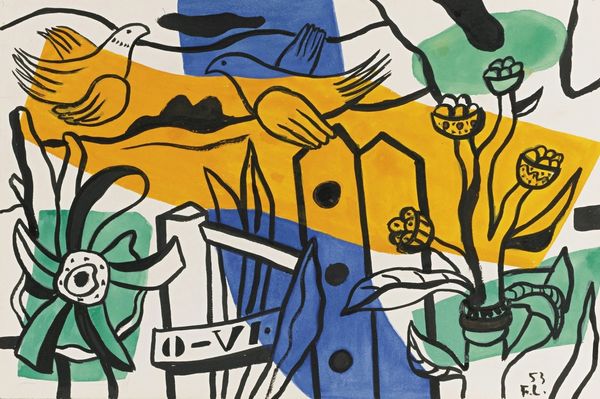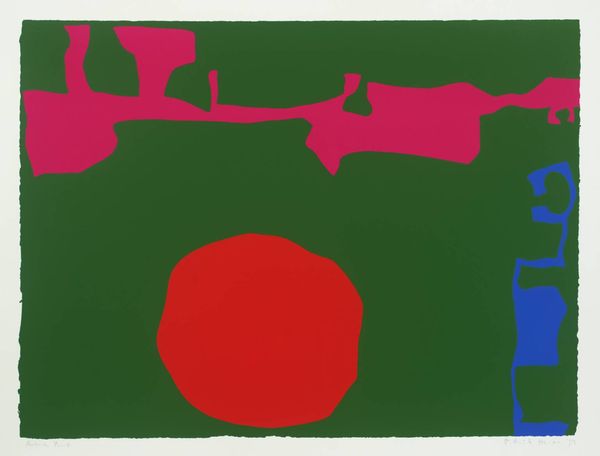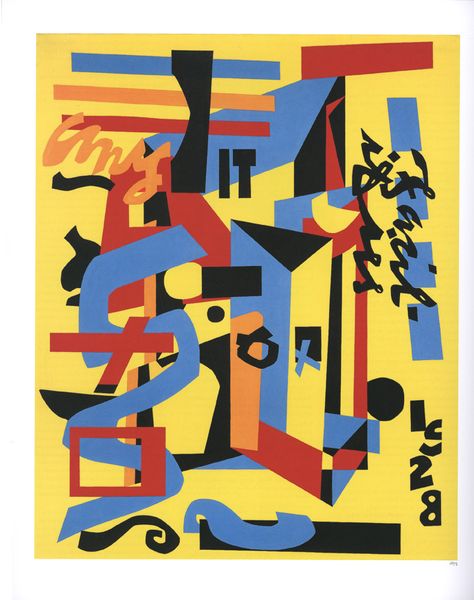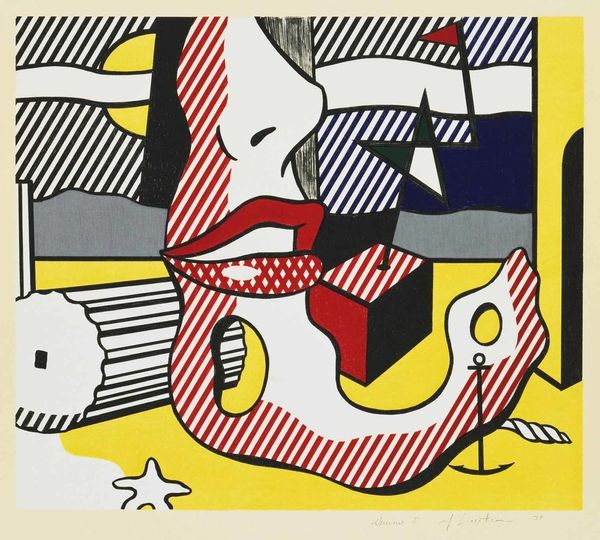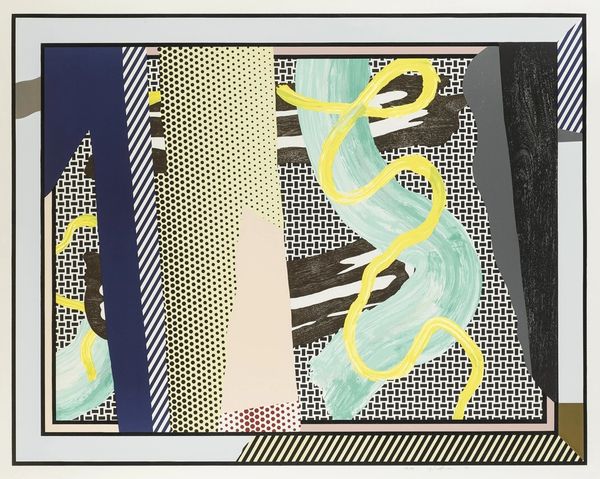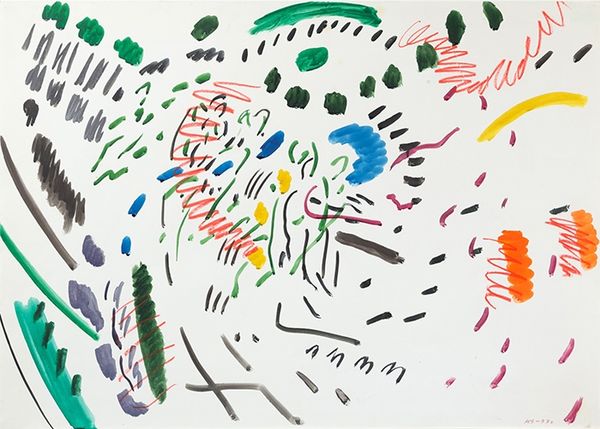
Copyright: Modern Artists: Artvee
Curator: Matisse's "Le Cheval, L’Ecuyère et le Clown," a vibrant collage from his "Jazz" series of 1947, immediately strikes me with its almost childlike playfulness, despite its abstract nature. The colours feel almost rebellious against the seriousness of traditional art. Editor: It's intriguing how seemingly simple shapes evoke such dynamic imagery. What I find particularly compelling is the historical context in which "Jazz" was created. Matisse, confined to his bed due to illness, used paper cut-outs as a means of artistic expression. It underscores the powerful influence of constraint on creativity, mirroring broader post-war limitations and a societal yearning for reinvention. Curator: That idea of constraint really resonates. The simplified forms—the pink horse, the splashes of yellow—they read as almost performative in their joyful assertion against that backdrop of post-war austerity. Did the political landscape influence his use of the circus as a subject matter? Editor: Absolutely. Circuses and carnivals offered a space for transgression, challenging conventional norms. Think about it: the clown subverts social hierarchies, the equestrian embodies freedom and control, while these figures were heavily charged symbols in wartime propaganda. Matisse reclaiming these forms signals a turn towards democratization of imagery. And by choosing such universally-themed figures, he communicates to the public more efficiently. Curator: It feels as though he's dismantling those propaganda mechanisms, piece by piece, literally reassembling new meaning from familiar symbols. What do you think about the collage as medium contributing to that purpose? Editor: Collage here serves a dual purpose. Tactile process allowed a bedridden artist a physically engaging art making; in more symbolic terms, though, it becomes a symbol of re-construction after an era defined by tearing apart. That's why the seemingly random placement of shapes still has a strong overall cohesive sense, with colours balanced for optimum effect. The composition doesn’t shout a clear message, which then lets it become universal. Curator: A vibrant reminder, perhaps, that even from fragmentation, new narratives, even joyful ones, can emerge. Editor: Precisely, Matisse encourages us to consider the power of accessible imagery and how art contributes to our societal self-construction in moments of rebuilding.
Comments
No comments
Be the first to comment and join the conversation on the ultimate creative platform.

